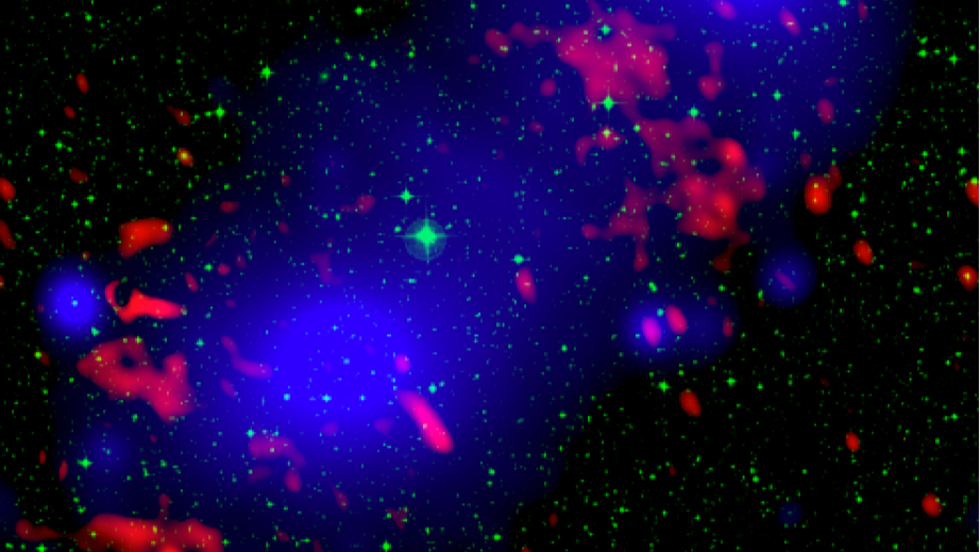
Mathematical and physical sciences
June 15, 2023
Exploring the energy flow within the largest shock waves in the universe
The group led by Associate Professor Kazuhiro Nakazawa at Nagoya University/KMI, and doctorial course student Yuki Omiya at the Graduate School of Science, in collaboration with the National Astronomical Observatory of Japan, Tokyo University of Science, Hiroshima University, Saitama University, JAXA Institute of Space and Astronautical Science, Tokyo Metropolitan University, Netherlands Institute for Space Sciences, and Toho University, has succeeded in estimating the length, width, depth, and merging velocity of the shock wave just born in the nearby merging galaxy cluster CIZA J1358.9-4750, and found that the energy released amounted to 2.3 × 1038 W. The team used data from the European X-ray astronomy satellite XMM-Newton.
Galaxy clusters are the largest self-gravitating objects in the universe and host a massive volume of high-temperature gas that emits bright X-rays. The cluster merger is the largest astronomical event in the universe, generating a huge shock wave of 3 million light-years square. In astronomy, it is generally difficult to measure the depth of a celestial object. In this study, the researchers determined the depth by taking advantage of the fact that the two clusters have just collided, making their original shape easier to reasonably estimate. By determining the velocity of the shock front from the temperature distribution of the high-temperature gas and multiplying it by the length, width, and depth, they estimated the amount of kinetic energy released in the shock front, being converted into heat, particle acceleration, and magnetic-field amplification.
This research was published in the February 2023 issue of the Publications of the Astronomical Society of Japan (PASJ). In a related paper, Kurahara et al. (PASJ, December 2022) discovered "synchrotron radio emission" by accelerated electrons and amplificated magnetic fields around the shock front. Its luminosity is estimated to be ~3.5 × 1033 W. These results give us a conversion efficiency of about 10-5.
Understanding the distribution of conversion efficiency will help us to clarify what is happening under the largest shock wave in the cluster merger.
The study, “XMM-Newton view of the shock heating in an early merging cluster, CIZA J1358.9−4750,” was published in Publications of the Astronomical Society of Japan(PASJ) on December 1, 2022, at DOI: https://doi.org/10.1093/pasj/psac087.
For the further information, visit KMI’s website:
https://www.kmi.nagoya-u.ac.jp/eng/blog/2023/06/15/2831/
Experts contact
Kazuhiro Nakazawa
E-mail: nakazawa_at_u.phys.nagoya-y.ac.jp
Media contact
Shota Takahashi
Email: pr-office_at_kmi.nagoya-u.ac.jp